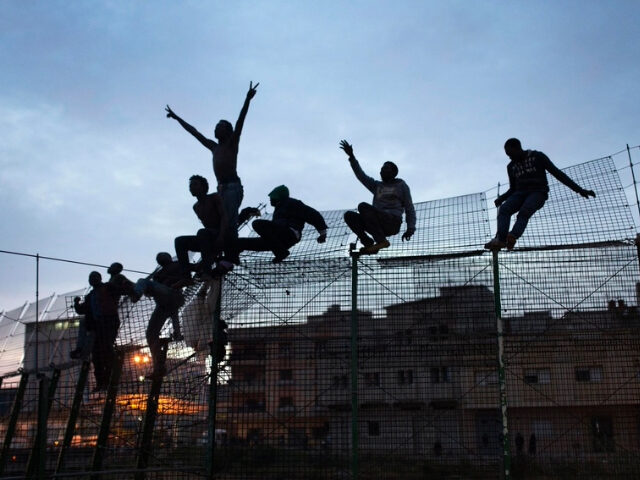The government of Morocco announced on Friday that it arrested 152 people on charges of using social media to incite mass illegal immigration to Ceuta, a Spanish territory on the Mediterranean coast, adjacent to Morocco.
The Moroccan city of Fnideq reported that about three thousand Moroccans, mostly military-age men, attempted to rush the border fence to Ceuta. They were met by a strong deployment of both Spanish and Moroccan security forces. According to both governments, all attempts to cross the border were “foiled.”
The Spanish Interior Ministry said that none of the aspiring illegal immigrants made it into Ceuta, and the situation has been “brought under control.”
Ceuta is part of a smattering of Spanish territories along the North African coast and is an ancient city that was controlled by every empire that rolled through the region until Spain took its turn in the late 16th Century. A similar Spanish “enclave” called Melilla lies on the northern border of Morocco.
Ceuta’s long and colorful history left it with a mixed population of Christians, Muslims, Jews, and Hindus, all of which have influenced everything from the city’s architecture to its food. The first sight that greets most visitors is a gigantic bronze statue of the Greek demigod Hercules. The beaches of Ceuta and the nearby scenic mountain of Hacho have made it a popular tourist destination.
Spain declared Ceuta autonomous in 1995 and decided to keep it that way by building an impressive double-layered border fence in 2006. Moroccans periodically try to jump the fences into both Ceuta and Melilla, hoping to get their feet on European soil that lies only a few tantalizing yards away. Some of the aspiring migrants attempt to bypass the fences by swimming around the coast.
Moroccan security officials say there have been at least 45,000 illegal immigration attempts so far in 2024, with 14,000 in August alone. One of the largest successful border penetrations occurred in May 2021, when at least 6,000 Moroccans made it into Ceuta in a single day, mostly by swimming or boating around the fences. Spain accused Moroccan officials of not doing enough to stop that particular invasion.
Morocco is not happy about the Spanish enclaves on its borders, believing those territories should rightfully belong to Morocco. Another point of simmering tension is Morocco’s accusation that Spain coddles the Polisario Front, a separatist movement of the indigenous Sahrawi people who think that a good deal of Morocco rightfully belongs to them.
Spain smoothed some ruffled Moroccan feathers by backing Morocco’s autonomy plan for Western Sahara in 2022, and the two governments share a mutual interest in not allowing thousands of Morocco’s young men to decamp to Spanish territory, so when social media influences began putting together a new border rush, both Spain and Morocco took decisive actions to thwart it.
Morocco’s intelligence agency, the DGSN, spotlighted posts on Facebook that allegedly used false information to lure Moroccan youth into swarming the border fence. Some of the migrants were reportedly sub-Saharan Africans who were hoping to push through Morocco en route to Europe.
Clashes with police broke out after the first Moroccan migrants were arrested while trying to reach Ceuta on Sunday and continued until Fnideq city officials said order had been restored on Friday. The police deployed water cannon when protesters threw stones at them.

COMMENTS
Please let us know if you're having issues with commenting.